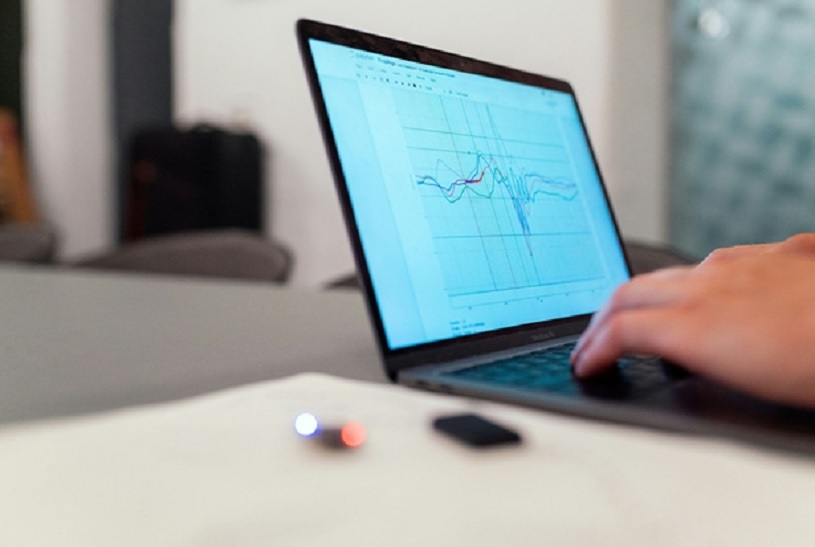Economy
How Do Crypto Market Fluctuations Affect The Startups Make Monitoring Tools?

It is evident by research that when investors or business owners start a new business or invest in a part of a business, they conduct thorough research to gather as much information as they can to make the best decision.
The rising adoption rate of cryptocurrency and blockchain technology has started a new trend in the IT sector. More and more startups are getting launched and are offering their services that are in one or more ways associated with the crypto sector.
One such way is offering products and services for monitoring tools. As you know, the crypto market, however, is known for its volatility. Unlike established stock markets, cryptocurrency prices can fluctuate wildly based on various factors, including news events, regulatory changes, and market sentiment.
Monitoring tools are developed to help the crypto market participants with real-time data and insights, enabling them to track price movements, analyze trends, track on-chain activity, and manage risk.
These work like an assistant for traders, investors, and other crypto market participants to make informed decisions and navigate the volatile landscape effectively. But do you know the market fluctuation can also affect the companies or especially the startups that are developing these monitoring tools?
Stay with us to learn about how crypto market volatility impacts startups developing monitoring tools.
The Impact Of Crypto Market Fluctuations On Startups
The market as we see it today has evolved a lot and has become more unpredictable. Transactions are carried out at lightning speed because of the involvement of AI-based tools that do the task for human traders.
But do you know monitoring tools are also powered by AI so that they keep up with the speed? Tools like bitcoin bank breaker are used by traders to gauge the market and stay updated with the price movements. Therefore, market fluctuations also affect the demand for monitoring tools in many ways.
The Demand for Monitoring Tools increases During Volatility
Cryptocurrency market fluctuations are both a blessing and a curse for startups developing monitoring tools. While volatility can present challenges, it also creates a surge in demand for their services. But how is that so?
1 – When prices swing wildly, the need for real-time data and actionable insights becomes paramount. Investors and traders rely heavily on monitoring tools to make informed decisions in a rapidly changing market. Features like live price feeds, order book depth analysis, and charting tools become crucial for navigating volatility.
2 – Market fluctuations heighten the need to track not just prices but also underlying trends and on-chain activity. Monitoring tools that offer comprehensive data analysis, including social media sentiment tracking and whale wallet movements, become invaluable assets for market participants seeking to anticipate price movements and make strategic decisions.
Crypto market volatility acts as a catalyst for the adoption of monitoring tools. As the market becomes more volatile, the demand for these tools to navigate the uncertainty intensifies, presenting a significant growth opportunity for startups in this space.
Funding and Investment Challenges
However, crypto market fluctuations can also pose significant challenges for startups. A major hurdle is the impact on funding and investment.
Downturns in the crypto market can significantly erode investor confidence. Venture capitalists and angel investors have become more cautious, leading to a decrease in available funding for blockchain startups. This can stifle the growth and development of monitoring tool startups, hindering their ability to innovate and expand their offerings.
Securing funding becomes an uphill battle for startups during bearish market cycles. Investors may prioritize established players with proven track records, making it difficult for newcomers to secure the capital needed to compete effectively.
Talent Acquisition and Retention
Furthermore, crypto market fluctuations can have a ripple effect on talent acquisition and retention within the blockchain space.
Volatility can impact salaries and job security within the industry. During downturns, companies may resort to salary freezes or layoffs to stay afloat. This creates uncertainty for talented developers and analysts, potentially discouraging them from joining or staying with monitoring tool startups.
Startups may find it challenging to attract and retain top talent in a volatile market. Established companies with more resources may become more attractive to skilled professionals seeking stability and higher compensation. This can hinder startups’ ability to build strong development teams and maintain a competitive edge.
While crypto market fluctuations create a surge in demand for monitoring tools, they also present funding and talent acquisition challenges that startups need to navigate strategically.
Monitoring Tools Adaptations for Fluctuations
Crypto market fluctuations demand a dynamic approach from monitoring tool startups. But do you know how these tools can adapt to cater to user needs and prosper in a volatile environment?
By Focusing On User Needs During Different Market Conditions
Effective monitoring tools need to adapt their functionalities to cater to the specific needs of traders and investors during both bullish and bearish markets.
In The Bullish Markets
During periods of rising prices, features like technical analysis tools, margin trading support, and portfolio optimization tools have become highly sought after. Monitoring tools can provide users with charting functionalities to identify bullish trends, calculate potential returns, and optimize their portfolios for maximum gain.
In The Bearish Markets
When prices plummet, risk management and sentiment analysis become crucial. Monitoring tools can offer features like stop-loss order automation, volatility alerts, and social sentiment tracking. These features help users mitigate losses, identify potential market bottoms, and make informed decisions during downturns.
With The Help Of Data Aggregation And Advanced Analytics
The effectiveness of any monitoring tool hinges on the quality and comprehensiveness of its data sources. But how can startups improvise their offerings in this critical area?
Monitoring tools need to aggregate data feeds from a variety of reliable sources, including major cryptocurrency exchanges, blockchain explorers, and on-chain analytics platforms. This ensures users have access to the most up-to-date and accurate market information to make informed decisions.
With the vast amount of data generated in the crypto market, leveraging Artificial Intelligence (AI) and Machine Learning (ML) becomes crucial. These technologies can analyze market trends, identify arbitrage opportunities, and predict price movements with greater accuracy. By integrating AI and ML into their tools, startups can empower users with actionable insights that go beyond basic data visualization.
By Emphasizing Security And Transparency
In a volatile market, security and transparency become paramount concerns for users. With rising cyber threats in the crypto space, monitoring tool startups need to prioritize strong security measures.
This includes implementing secure data storage practices, employing encryption protocols, and adhering to industry best practices for user privacy protection. Upholding a strong security posture builds user trust and confidence in the platform.
Startups should offer clear and transparent pricing models for their monitoring tools. Users should be able to easily understand the different pricing tiers and the features associated with each. Furthermore, maintaining clear communication with users is essential.
Regular updates on platform improvements, market insights, and security measures can foster a sense of trust and loyalty among users.
Wrapping Up
The future of monitoring tools in the crypto market remains intertwined with the overall market dynamics. While crypto market fluctuations present challenges, they also highlight the critical role these tools play in navigating a volatile landscape.
As the market matures and user demand evolves, monitoring tools will likely see continued development in areas like AI-powered analytics, advanced risk management features, and an even greater emphasis on data security and user privacy.
Economy
Investors Reaffirm Strong Confidence in Legend Internet With N10bn CP Oversubscription

By Aduragbemi Omiyale
The series 1 of the N10 billion Commercial Paper (CP) issuance of Legend Internet Plc recorded an oversubscription of 19.7 per cent from investors.
This reaffirmed the strong confidence in the company’s financial stability and growth trajectory.
The exercise is a critical component of Legend Internet’s N10 billion multi-layered financing programme, designed to support its medium- to long-term growth.
Proceeds are expected to be used for broadband infrastructure expansion to deepen nationwide penetration, optimise the organisation’s working capital for operational efficiency, strategic acquisitions that will strengthen its market position and accelerate service innovation.
The telecommunications firm sees the acceptance of the debt instruments as a response to its performance, credit profile, and disciplined operational structure, noting it also reflects continued trust in its ability to execute on its strategic vision for nationwide digital infrastructure expansion.
“The strong investor participation in our Series 1 Commercial Paper issuance is both encouraging and validating. It demonstrates the market’s belief in our financial integrity, operational strength, and long-term vision for digital infrastructure growth. This support fuels our commitment to building a more connected, competitive, and digitally enabled Nigeria.
“This milestone is not just a financing event; it is a strategic enabler of our expansion plans, working capital needs, and future acquisitions. We extend our sincere appreciation to our investors, advisers, and market partners whose confidence continues to propel Legend Internet forward,” the chief executive of Legend Internet, Ms Aisha Abdulaziz, commented.
Also commenting, the Chief Financial Officer of Legend Internet, Mr Chris Pitan, said, “This achievement is powered by our disciplined financing framework, which enables us to scale sustainably, innovate continuously, and consistently meet the evolving needs of our customers.
“We remain committed to building a future where every connection drives opportunity, productivity, and growth for communities across Nigeria.”
Economy
Tinubu to Present 2026 Budget to National Assembly Friday

By Adedapo Adesanya
President Bola Tinubu will, on Friday, present the 2026 Appropriation Bill to a joint session of the National Assembly.
The presentation, scheduled for 2:00 pm, was conveyed in a notice issued on Wednesday by the Office of the Clerk to the National Assembly.
According to the notice, all accredited persons are required to be at their duty posts by 11:00 am on the day of the presentation, as access into the National Assembly Complex will be restricted thereafter for security reasons.
The notice, signed by the Secretary, Human Resources and Staff Development, Mr Essien Eyo Essien, on behalf of the Clerk to the National Assembly, urged all concerned to ensure strict compliance with the arrangements ahead of the President’s budget presentation.
The 2026 budget is projected at N54.4 trillion, according to the approved 2026–2028 Medium-Term Expenditure Framework (MTEF) and Fiscal Strategy Paper (FSP).
Meanwhile, President Tinubu has asked the National Assembly to repeal and re-enact the 2024 appropriation act in separate letters to the Senate and the House of Representatives on Wednesday and read during plenary by the presiding officers.
The bill was titled Appropriation (Repeal and Re-enactment Bill 2) 2024, involving a total proposed expenditure of N43.56 trillion.
In a letter dated December 16, 2025, the President said the bill seeks authorisation for the issuance of a total sum of N43.56 trillion from the Consolidated Revenue Fund of the Federation for the year ending December 31, 2025.
A breakdown of the proposed expenditure shows N1.74 trillion for statutory transfers, N8.27 trillion for debt service, N11.27 trillion for recurrent (non-debt) expenditure, and N22.28 trillion for capital expenditure and development fund contributions.
The President said the proposed legislation is aimed at ending the practice of running multiple budgets concurrently, while ensuring reasonable – indeed unprecedentedly high – capital performance rates on the 2024 and 2025 capital budgets.
He explained that the bill also provides a transparent and constitutionally grounded framework for consolidating and appropriating critical and time-sensitive expenditures undertaken in response to emergency situations, national security concerns, and other urgent needs.
President Tinubu added that the bill strengthens fiscal discipline and accountability by mandating that funds be released strictly for purposes approved by the National Assembly, restricting virement without prior legislative approval, and setting conditions for corrigenda in cases of genuine implementation errors.
The bill, which passed first and second reading in the House of Representatives, has been referred to the Committee on Appropriations for further legislative action.
Economy
Nigeria Bans Wood, Charcoal Exports, Revokes Licenses

By Adedapo Adesanya
The federal government has imposed an immediate nationwide ban on the export of wood and allied products, revoking all previously issued licenses and permits to exporters.
The announcement was made on Wednesday by the Minister of Environment, Mr Balarabe Lawal, during the 18th meeting of the National Council on Environment in Katsina State.
Mr Lawal said the directive, outlined in the Presidential Executive Order titled Presidential Executive Order on the Prohibition of Exportation of Wood and Allied Products, 2025, became necessary to curb illegal logging and deforestation across the country.
“Nigeria’s forests are central to environmental sustainability, providing clean air and water, supporting livelihoods, conserving biodiversity, and mitigating the effects of climate change,” the Minister said, warning that the continued exportation of wood threatens these benefits and the long-term health of the environment.
The order, published in the Extraordinary Federal Republic of Nigeria Official Gazette No. 180, Vol. 112 of 16 October 2025, relies on Sections 17(2) and 20 of the 1999 Constitution (as amended), which empower the state to protect the environment, forests, and wildlife and prevent the exploitation of natural resources for private gain.
Under the new policy, security agencies and relevant ministries are expected to enforce a total clampdown on illegal logging activities nationwide.
On his part, the Katsina State Deputy Governor, Mr Faruk Lawal Jobe highlighted the state’s history of pioneering socio-economic policies that have influenced national policy. He emphasized the importance of collaboration in addressing environmental challenges across the country.
“Environmental sustainability is critical to achieving growth and improving the quality of life of our people,” he said. “Our administration has prioritised initiatives aimed at combating desertification and promoting afforestation.”
The ban reflects the government’s commitment to safeguarding Nigeria’s shrinking forest cover and addressing climate change, while ensuring sustainable use of natural resources for future generations.
-

 Feature/OPED6 years ago
Feature/OPED6 years agoDavos was Different this year
-
Travel/Tourism9 years ago
Lagos Seals Western Lodge Hotel In Ikorodu
-

 Showbiz3 years ago
Showbiz3 years agoEstranged Lover Releases Videos of Empress Njamah Bathing
-

 Banking7 years ago
Banking7 years agoSort Codes of GTBank Branches in Nigeria
-

 Economy3 years ago
Economy3 years agoSubsidy Removal: CNG at N130 Per Litre Cheaper Than Petrol—IPMAN
-

 Banking3 years ago
Banking3 years agoFirst Bank Announces Planned Downtime
-

 Banking3 years ago
Banking3 years agoSort Codes of UBA Branches in Nigeria
-

 Sports3 years ago
Sports3 years agoHighest Paid Nigerian Footballer – How Much Do Nigerian Footballers Earn






















